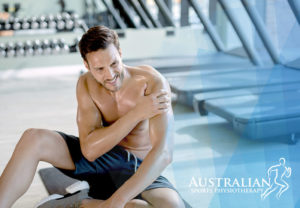Have you ever felt restricted by tight joints or experienced discomfort that limits your daily activities? Overcoming mobility issues can feel overwhelming, but there’s hope on the horizon.
Joint mobilisation techniques have emerged as vital tools in physiotherapy, offering targeted approaches to enhance range of motion and alleviate pain. These techniques, rooted in decades of research and clinical practice, empower therapists and patients in their pursuit of improved movement and quality of life. With a plethora of misinformation and myths surrounding physiotherapy, understanding the true benefits and methods of joint mobilisation becomes essential.
Incorporating joint mobilisation into your physiotherapy routine not only aids in restoring mobility but also plays a crucial role in pain management. Whether recovering from an injury, managing chronic pain, or simply seeking to enhance your physical performance, the right techniques can make all the difference.
What is joint mobilisation in physiotherapy?
Joint mobilisation is a therapeutic technique used by physiotherapists to improve range of motion, reduce pain, and restore function to joints that have become stiff or restricted due to injury, illness, or overuse. It involves applying controlled, passive movements to the joint to stretch the surrounding soft tissues and improve joint mobility.
Joint mobilisation is beneficial for conditions that cause pain or tightness, limiting motion. This technique works on all joints in the body, but it is especially effective for the wrist, shoulder, neck, back, hips, knees, ankles, and feet.
Joint mobilisation can also help alleviate lower back pain.
How joint mobilisation works in physiotherapy
- Stretching of restricted tissues: By gently moving the joint, the therapist stretches tight muscles, tendons, and ligaments that may limit movement.
- Reducing pain: Joint mobilisation can help reduce pain by improving blood flow to the area and reducing inflammation.
- Improving joint function: Increased range of motion can improve overall joint function and make daily activities easier.
Types of joint mobilisation techniques in physiotherapy
There are several types of joint mobilisation techniques, each suited to different conditions and joint types:
1. Graded mobilisation
This technique involves applying a controlled force to the joint in a specific direction to increase range of motion.
2. Sustained hold
This technique involves holding the joint in a specific position for some time to stretch tight muscles and ligaments.
3. Oscillation
This technique involves applying small, rhythmic movements to the joint to reduce pain and improve mobility.
4. Manipulation
This technique involves applying a quick, thrusting movement to the joint to release restrictions and improve range of motion.
Conditions treated with joint mobilisation in physiotherapy
Joint mobilisation can be used to treat a variety of conditions, including:
- Arthritis: Osteoarthritis and rheumatoid arthritis
- Back pain: Herniated discs, facet joint syndrome
- Shoulder pain: Frozen shoulder, rotator cuff tendinitis
- Knee pain: Meniscus tears, osteoarthritis
- Ankle pain: stiffness caused by sprains, strains
- Post-surgical stiffness
It’s crucial to note that joint mobilisation should be performed by a qualified physiotherapist, as improper application can lead to further injury.
The benefits of joint mobilisation in physiotherapy
1. Breaking adhesions
Over time, restricted movement can lead to the formation of adhesions, or scar tissue, around the joint. These adhesions can limit the joint’s range of motion and cause pain.
2. Improving joint lubrication
Joint mobilisation encourages increased movement, which can stimulate the production of synovial fluid, leading to better joint lubrication.
3. Reducing muscle tension
Joint mobilisation can help relax the muscles surrounding the joint, reducing tension and improving range of motion.
4. Improving proprioception
Joint mobilisation can help improve proprioception, which can enhance coordination and reduce the risk of injury.
5. Reducing pain
Joint mobilisation can help reduce pain by stimulating sensory nerves that “close the gate” to pain signals.
6. Enhanced range of motion
Joint mobilisation restores normal joint movement and function, leading to increased flexibility.

Final thoughts
In physiotherapy, joint mobilisation techniques play a pivotal role in enhancing patient outcomes, particularly range of motion and pain reduction.
These manual therapy interventions involve the skilled application of forces to specific joints to improve their function and promote healing.
By embracing these methods, you’re investing in your physical health and empowering yourself to live a more active, fulfilling life. Remember, movement is the key to vitality and freedom—so take the first step towards a more mobile you.
Let’s unlock your potential and rediscover the joy of movement together!
Book an appointment with one of our experienced physiologists today for a comprehensive assessment and customised treatment plan.










